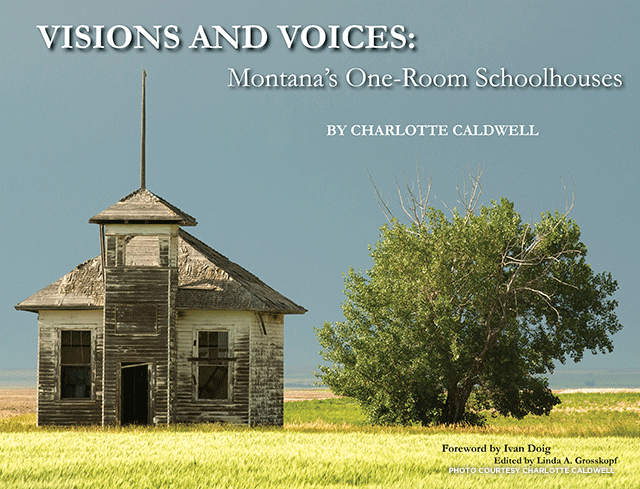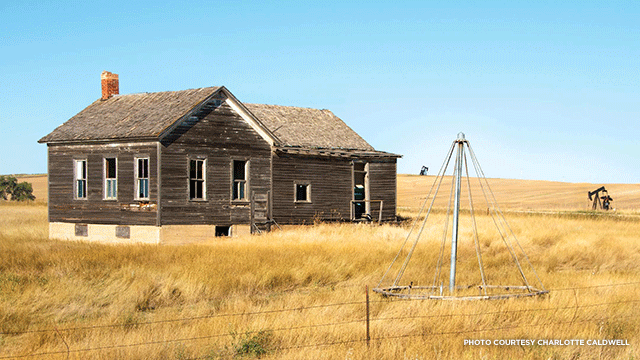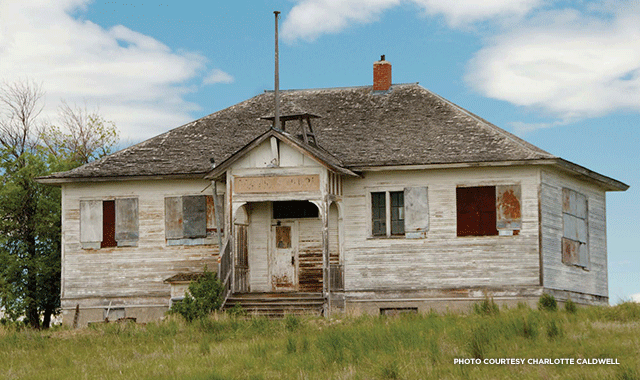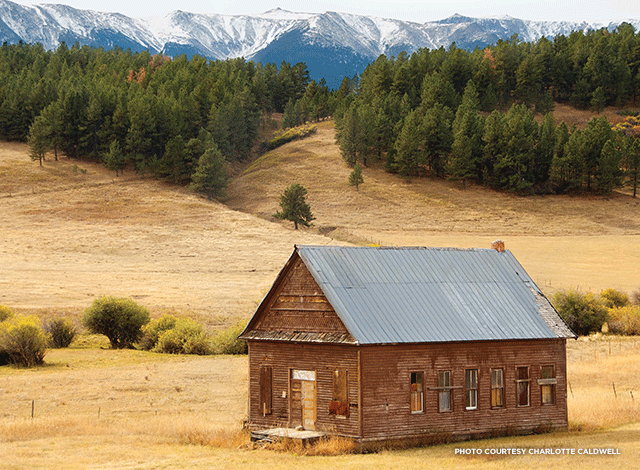[Book Review] Visions and Voices: Montana's One-Room Schoolhouses

"Visions and Voices: Montana’s One-Room Schoolhouses" was originally published in 2012.
One-room schoolhouses are more than physical relics of Montana’s past. They are enduring symbols of what was, and continues to be, the soul of the people that surround them; a soul built on self-reliance, the pioneer spirit, and above all, a sense of community.
Through stunning photography and telling interviews with the people that taught and learned in these stolid structures, Visions and Voices: Montana's One-Room Schoolhouses by author and photographer Charlotte Caldwell documents more than 120 of Montana’s one-room and rural schoolhouses (some of which appear in “Small Wonders” from Preservation magazine’s current Fall Issue) from the restored and repurposed, to the neglected and crumbling.

The 1923 Salmon Prairie School in western Montana’s Lake County doubled as the area’s post office. During recess, students would play cops and robbers, or sled down a nearby hill on deer hides.
Her elegant photos, produced in large, glossy prints, manage somehow to tease out the man-made details of these worn but hearty shelters amongst the raw, panoramic backdrops it seems only Montana can provide.
From the state’s eastern prairies and badlands with their softly tumbling landscapes dotted with sheep and winding rivers, to the rocky peaks and valleys of the its western mountains and forests, the settings of these schoolhouses remind of us of the sheer miracle of their creation and continued survival. And in that context, the contrast of the schools’ hand-hewn beauty that bears the identity of their pioneer creators with the wild lines and vibrant colors of Montana’s natural scenery is a story unto itself.

Through much of its history, the Ueland School in Sheridan County alternated between one and two rooms, based on their number of children in the community. Students would take turns hauling water for hand washing from the well of a nearby homestead.
But perhaps even more vivid than the photography are the recollections of those whose presence gave these remote outposts their meaning. Tiny details of child-sized desks with inkwells or the logistics of hosting the community’s only telephone bring these structures to life. Tales of recess shenanigans, childhood pranks, rites of passage, and holiday celebrations put the reader in the classroom in a time and place where the little things truly mattered.
Other stories of riding to school over frozen rivers or spending a night through a blizzard in unheated quarters shed light on just how much education was valued in the families of Montana’s early miners, homesteaders, and railroad workers. And it is through the stories of children instructing one another, or communities taking in teachers as their own, that one realizes the strength and uniqueness of the one-room school system.

With the exception of the post office, general store, and two grain operators, the entire community surrounding the Collins School in Teton County were farmers by trade. Norma Denny, a 1945 graduate of the school, remembers field trips to a fishing hatchery, a metal shop, a meatpacking plant, and the Great Falls Airport, where they were treated to a ride over their farms.
Through the stories and photos in Visions and Voices, the reader comes to realize that each school is a mirror of the values of its community and life in rural Montana, where every person pitched in to do their part and found ways to live harmoniously with one another. And whether a school featured herein continues to operate, has been restored and repurposed, or is slowly deteriorating in isolation, it represents the story of a lifestyle gone by, but a mindset that endures.
In the end, this book is as much a story of the culture of Montana’s communities as told by their schools as it is a history of Montana’s one-room schools as told by their communities. And though each school is a simple place, each is the site of profound lessons learned -- including those that weren’t formally taught.

The Bedford School in Stillwater County had no teacherage, so the teacher lived with members of the community. The school—built from nearby ponderosa pines, closed in 1934, and as of press time for Visions and Voices, there were only two surviving graduates.
Title: Visions and Voices: Montana’s One-Room Schoolhouses
Publisher: Barn Board Press through Sweetgrass Books
Distributor: Farcountry Press
Price: $49.95
Release: August 2014



